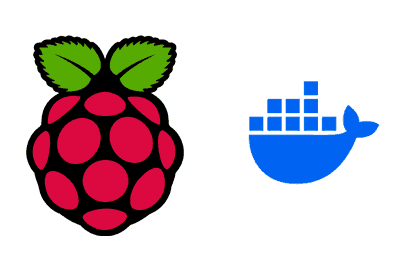Docker is a platform that allows developers to create, deploy, and run applications in containers. It has revolutionized the way we develop, deploy, and run applications by providing a lightweight and portable container platform.
Containers are isolated environments that package an application and all its dependencies, ensuring it runs consistently across different environments. They are like “mini virtualization environments”.
Docker makes managing these containers easy through simple commands and configuration files, such as Dockerfiles and docker-compose.yml files.
Some of the benefits of using Docker are:
- Portability: Docker containers can run on any compatible environment, from a local computer to a cloud server.
- Consistency: By containing all necessary dependencies, Docker ensures the application runs the same way everywhere.
- Scalability: Docker allows for easy deployment and management of applications at scale.
Installing Docker on Raspberry Pi
To start using Docker on our Raspberry Pi, first, we update the package list and the system to ensure everything is up to date. We run the following commands:
sudo apt update sudo apt upgrade
Then, we install Docker using the following command:
sudo apt install docker.io
This command will download and install the latest version of Docker for our Raspberry Pi. Finally, we verify that Docker was installed correctly by running:
docker —version
We should see the version of Docker installed on our Raspberry Pi.
Basic Docker Usage
With Docker installed, you can start creating and managing containers. Next, we’ll look at some basic commands and practical examples.
Run a Container
To run a container, use the docker run command. For example, to run a container from the hello-world image, which verifies Docker is working correctly, use:
docker run hello-world
Download Images
Docker uses images to create containers. You can search for and install images from Docker Hub (the official Docker image registry). For example, to download an nginx image, use:
docker pull nginx
Run an Nginx Container
To run a container based on the nginx image and map port 80 of the container to port 8080 on your Raspberry Pi, use:
docker run -d -p 8080:80 nginx
Now, if you open a browser and navigate to http://<YOUR_RASPBERRY_IP>:8080, you should see the Nginx welcome page.
View Active Containers
To list running containers, use:
docker ps
Stop and Remove Containers
To stop a container, use the docker stop command followed by the container ID or name:
docker stop <container_id>
To remove a stopped container, use:
docker rm <container_id>
Creating Our Own Images
Docker is ideal for setting up consistent development environments. Suppose you need to develop a Python application. You can use a Dockerfile to create a custom image that includes Python and your dependencies.
First, in a new directory, create a file called my-python-app with the following content:
FROM python:3.9-slim
WORKDIR /app
COPY requirements.txt .
RUN pip install -r requirements.txt
COPY . .
CMD ["python", "app.py"]
Then, build the image using the command:
docker build -t my-python-app .
Finally, run the image as a container with the following command:
docker run -d my-python-app
Deploying a Web Application
If you are working on a web project, you can use Docker Compose to define and run multiple containers. Create a docker-compose.yml file like the following:
version: '3'
services:
web:
image: nginx
ports:
- "8080:80"
db:
image: postgres
environment:
POSTGRES_DB: mydatabase
POSTGRES_USER: user
POSTGRES_PASSWORD: password
Run the containers with:
docker-compose up
This will start an Nginx container and a PostgreSQL container, configured to work together.

